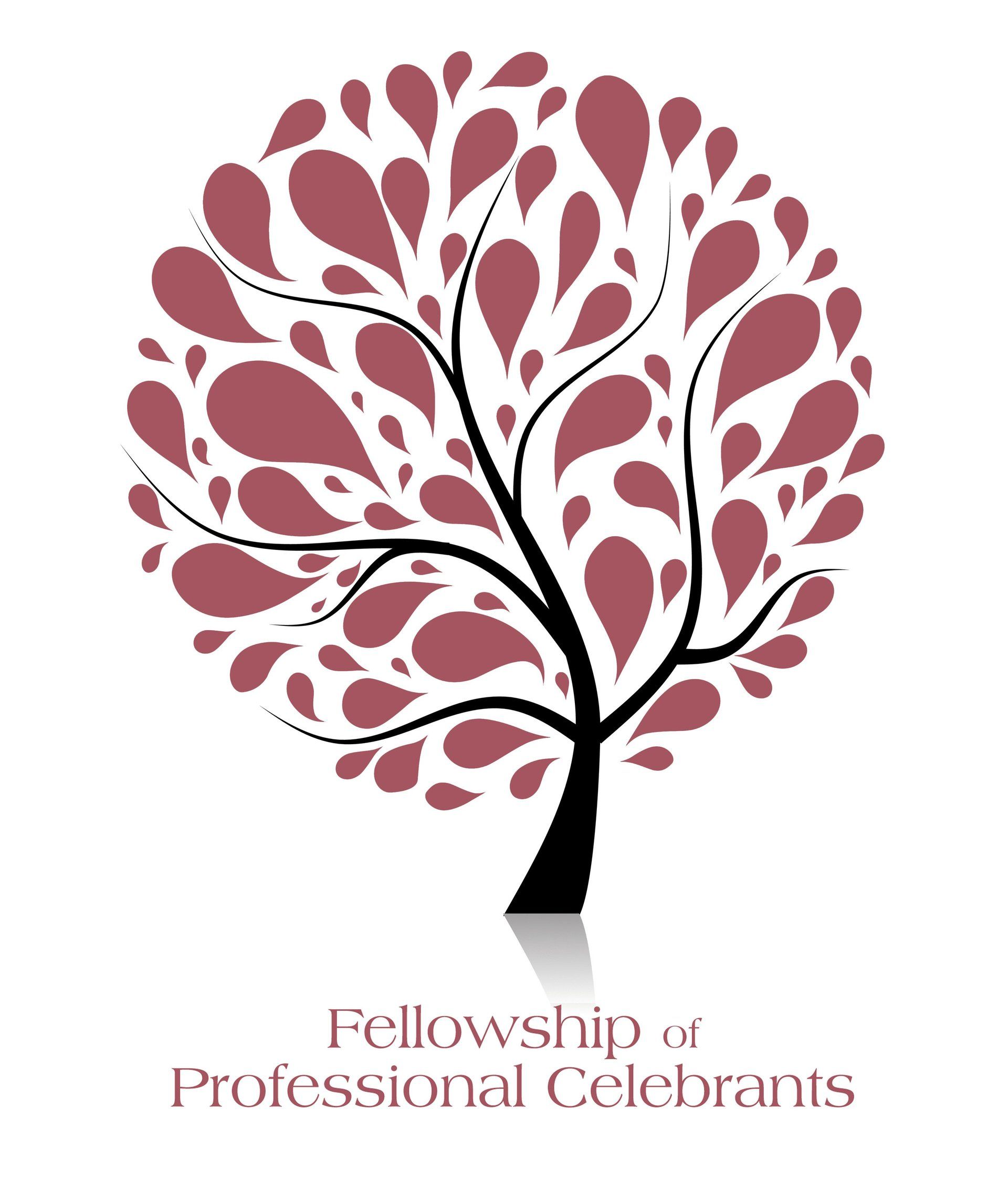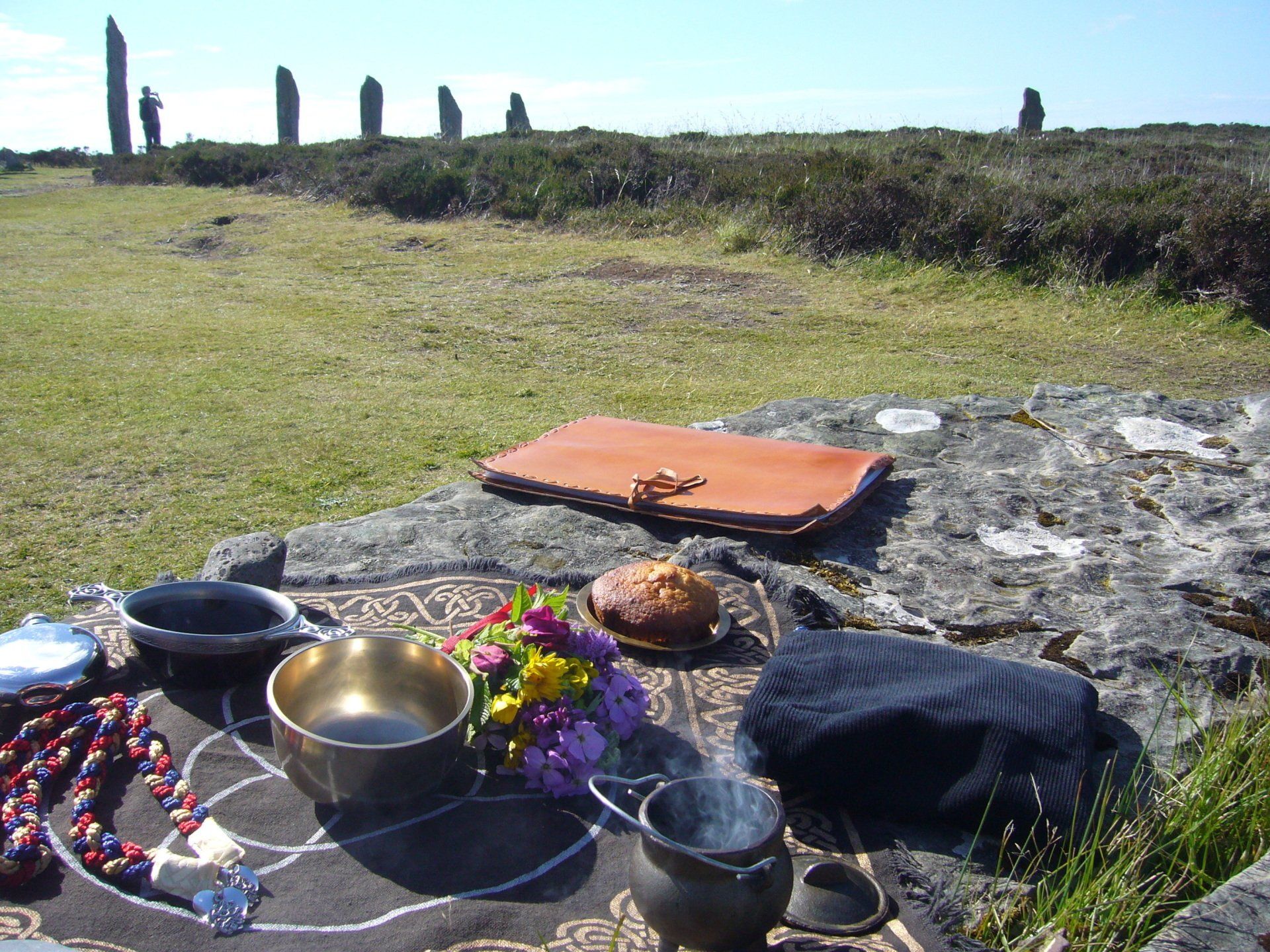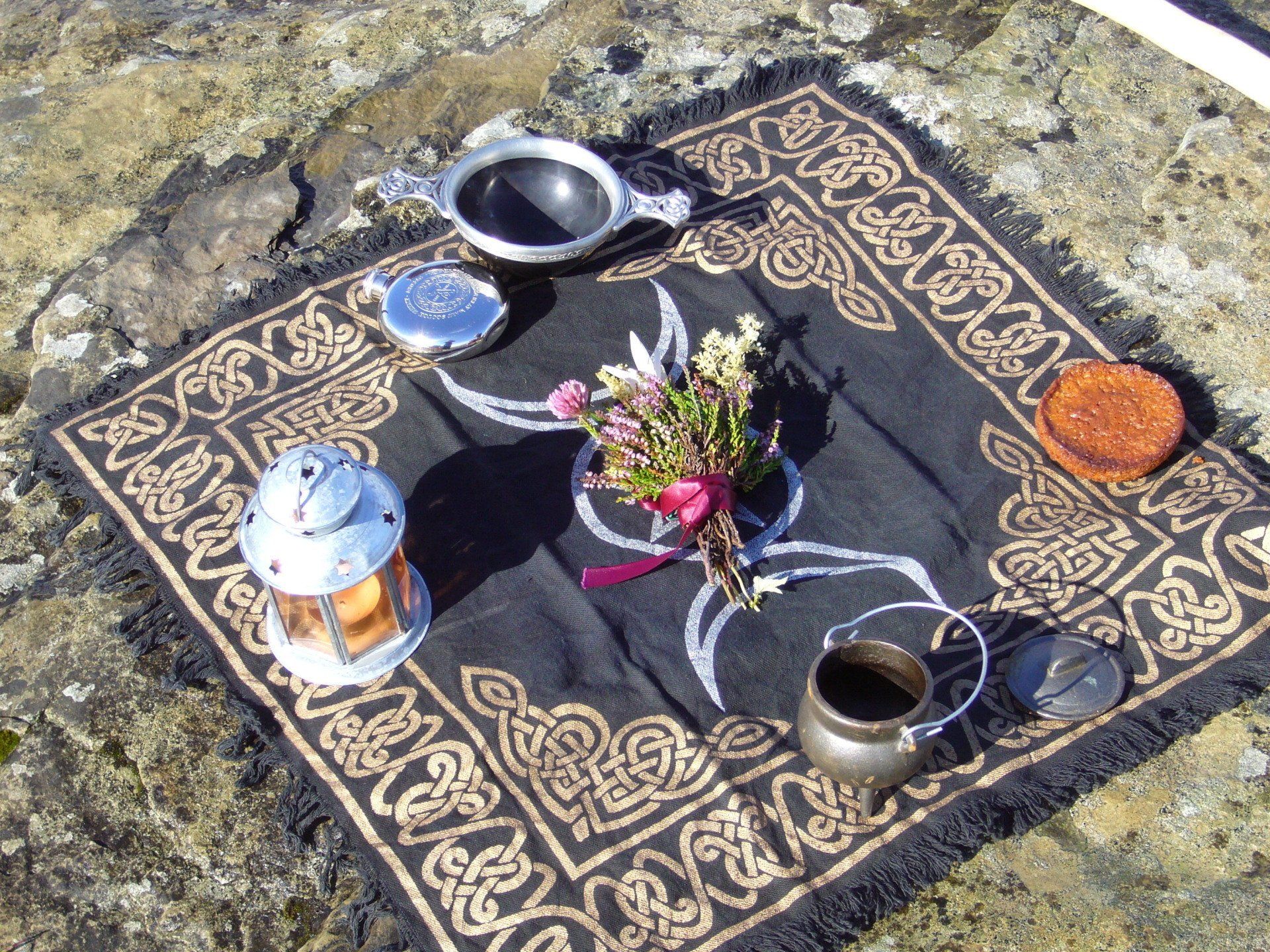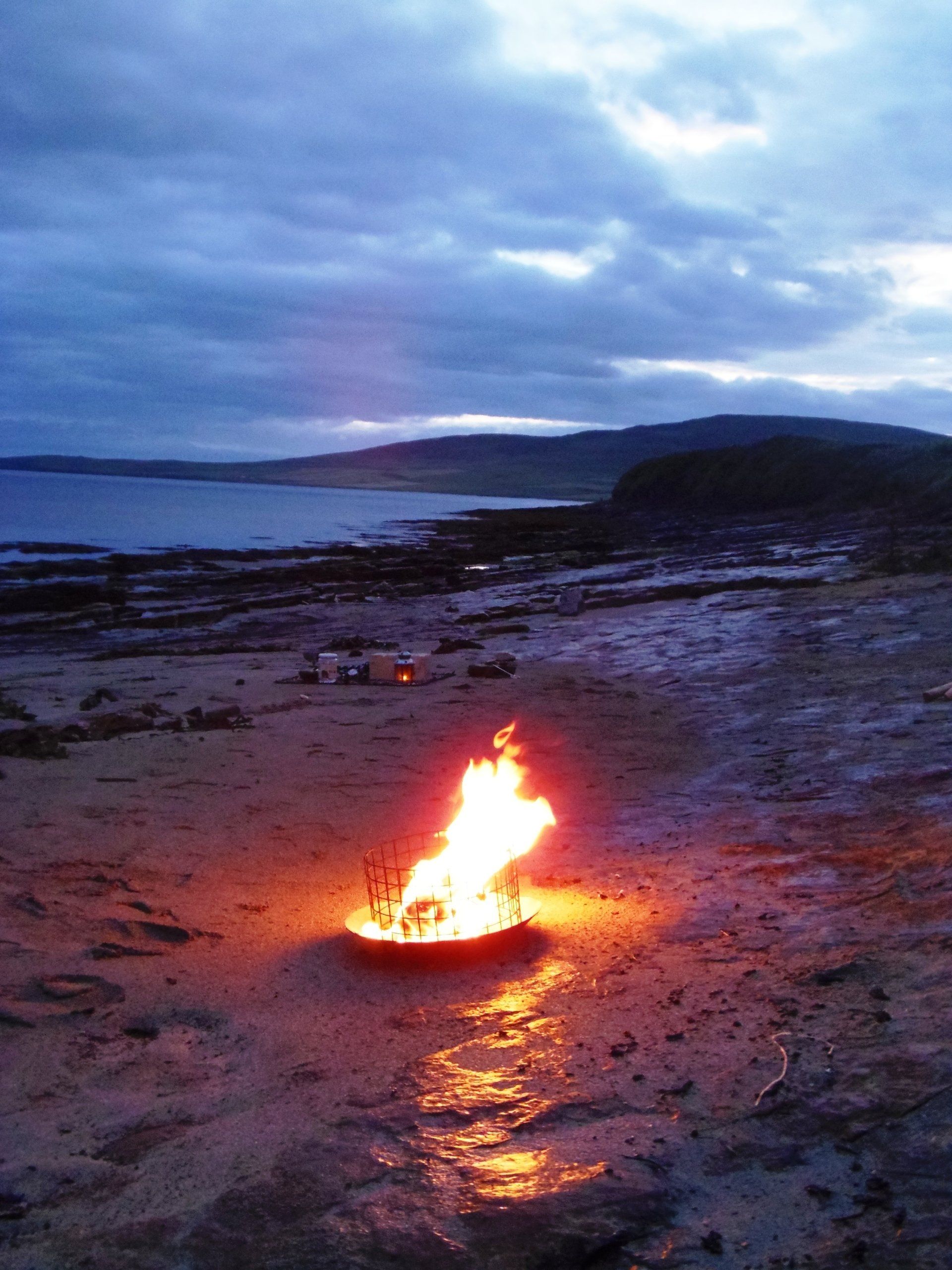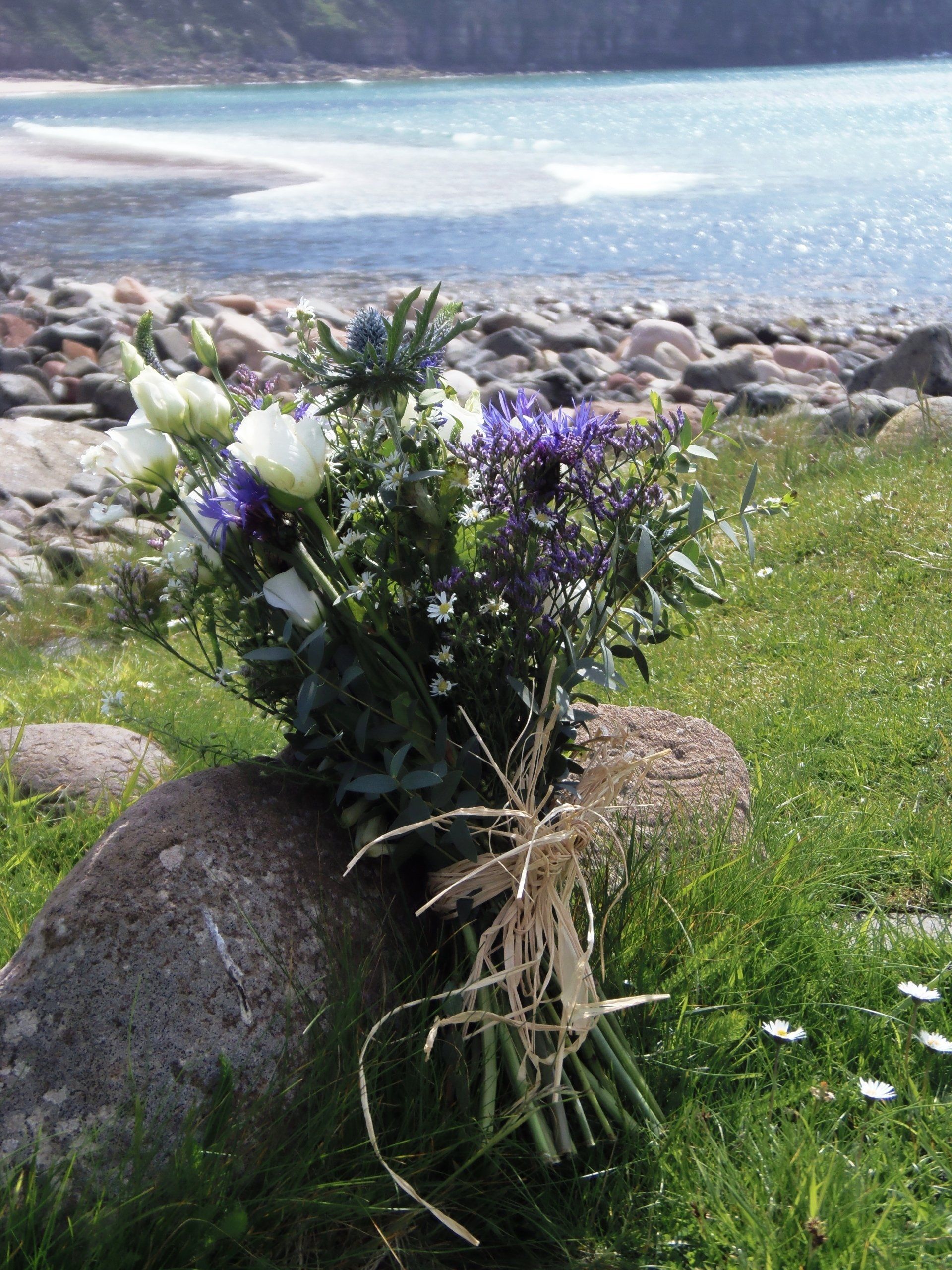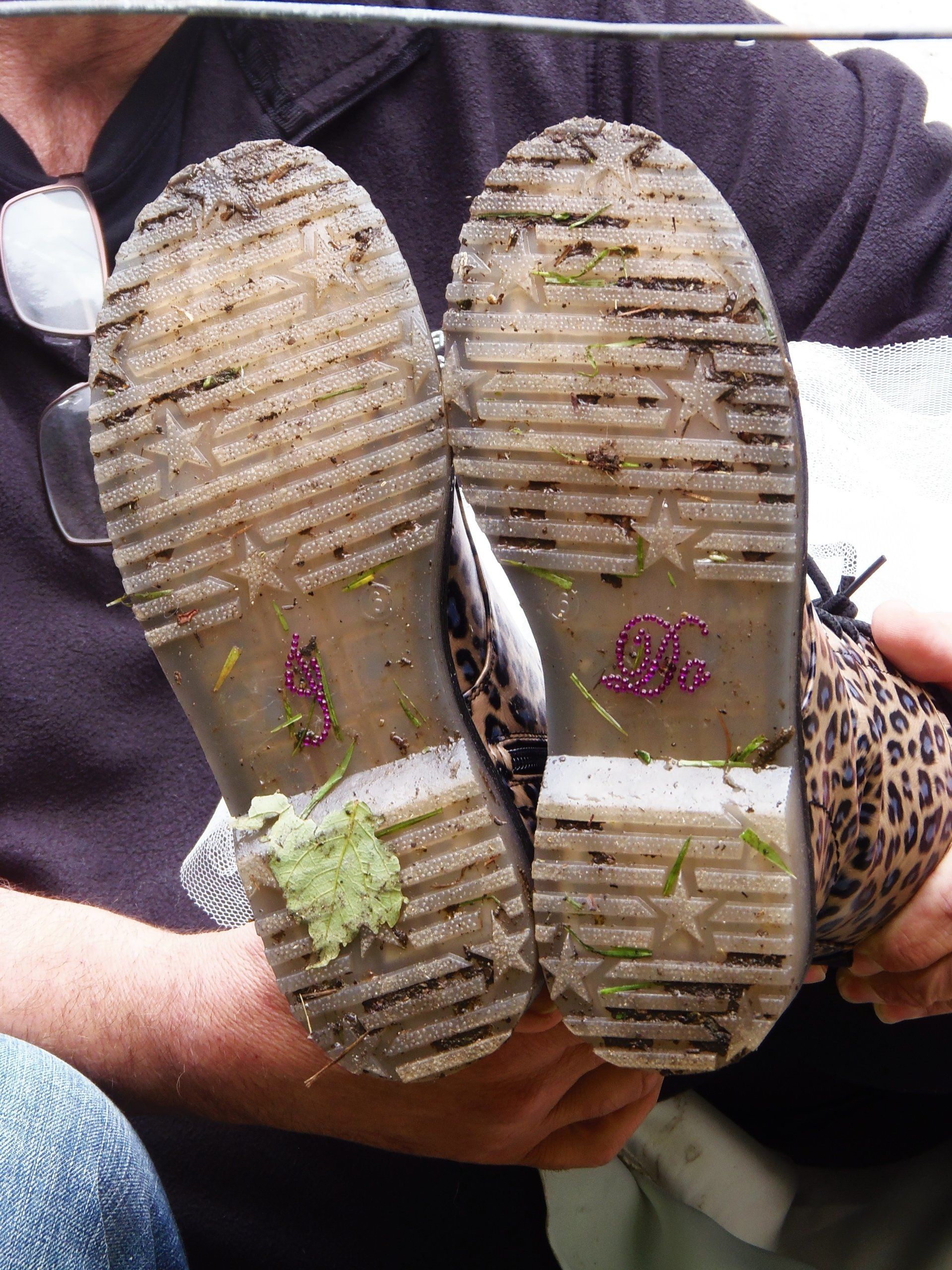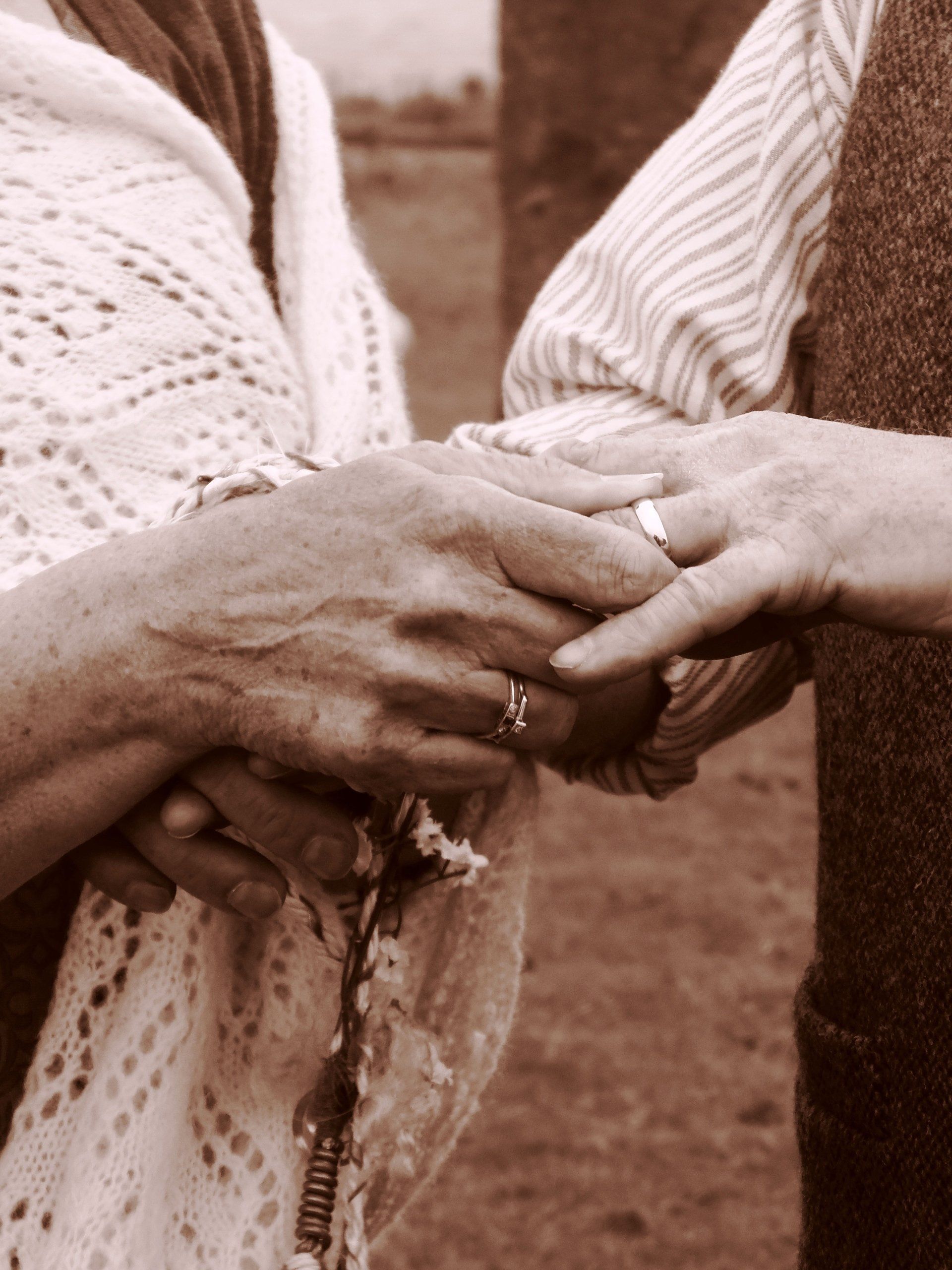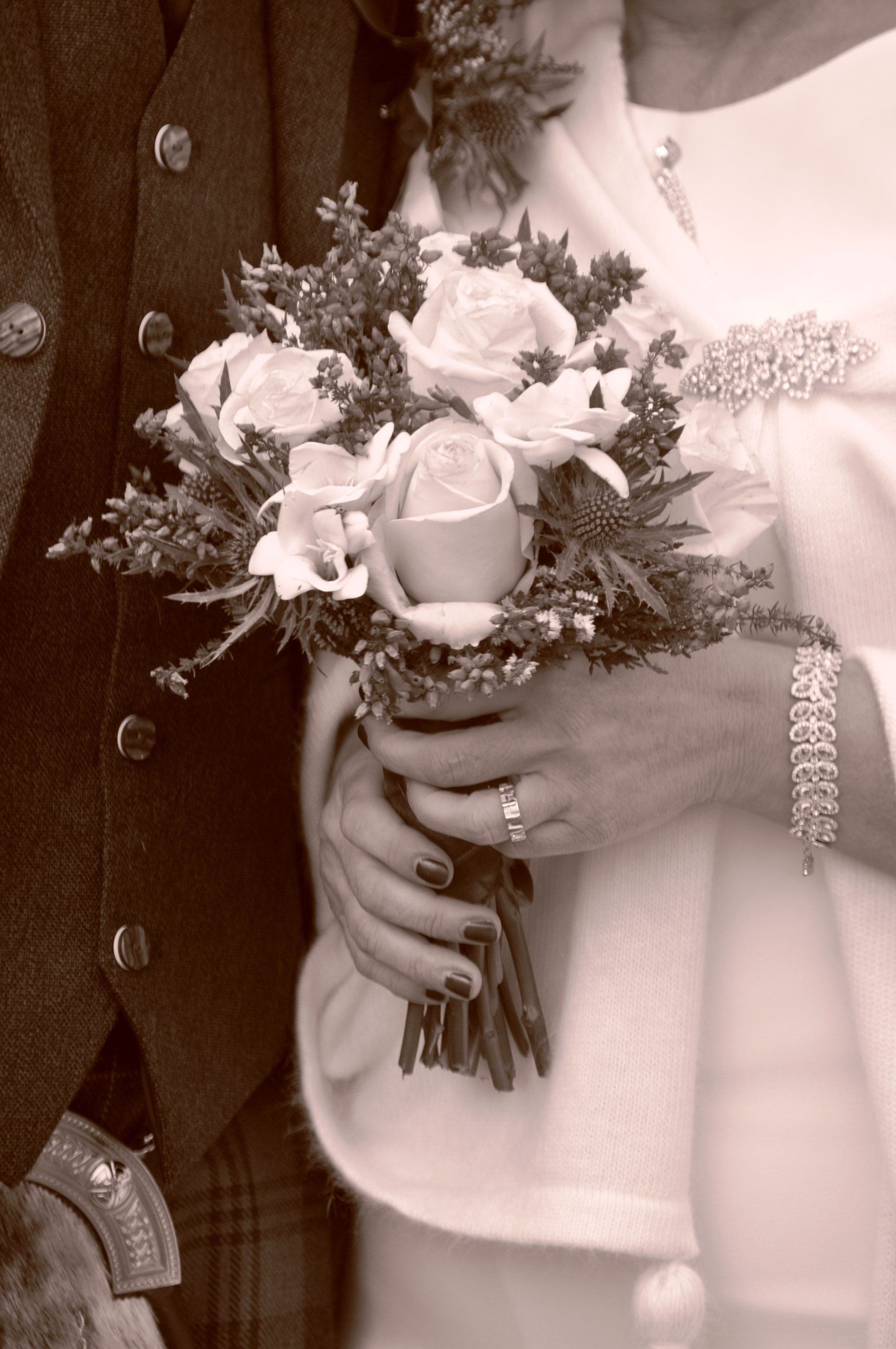Fully Legal Pagan Weddings in Orkney!
We are able to offer fully legal weddings, thus providing couples with the freedom to get married where, when and how they want.
For legal reasons, a minimum of 29 days' notice is required unless there are exceptional circumstances. In Scotland, the minimum age at which you can enter a legal contract of marriage is 16; you do not need your parents' or guardians' permission.
Whilst we always aim to provide ceremonies which reflect the beliefs of the people who commission us, we are approved as celebrants by the Scottish Pagan Federation and through them we are licensed by the National Records of Scotland. So any legal weddings we perform must be Pagan in nature and must take place in Scotland.
These weddings are classed as 'religious' (rather than 'civil') and must contain some wording that differentiates them from a civil or Humanist ceremony. We will be happy to advise on this and are very open about acceptable wording, often referring to Paganism as 'Earth Spirituality'. We have provided fully legal weddings for many couples who do not call themselves 'Pagan' but who have beliefs which we can fully honour.
We define a Pagan as someone who finds deity / spirit / energy expressed through nature – we are aware that different definitions of Paganism exist and we try to honour all paths with the intention of providing a service that is tailored to your personal experience of spirituality or divinity.
We are based in Orkney, and live here all year around, but we also serve the rest of Scotland and further afield on request. We are only authorised to perform legal weddings in Scotland.
We have trained with, are members of, and have public liability insurance through the Fellowship of Professional Celebrants.

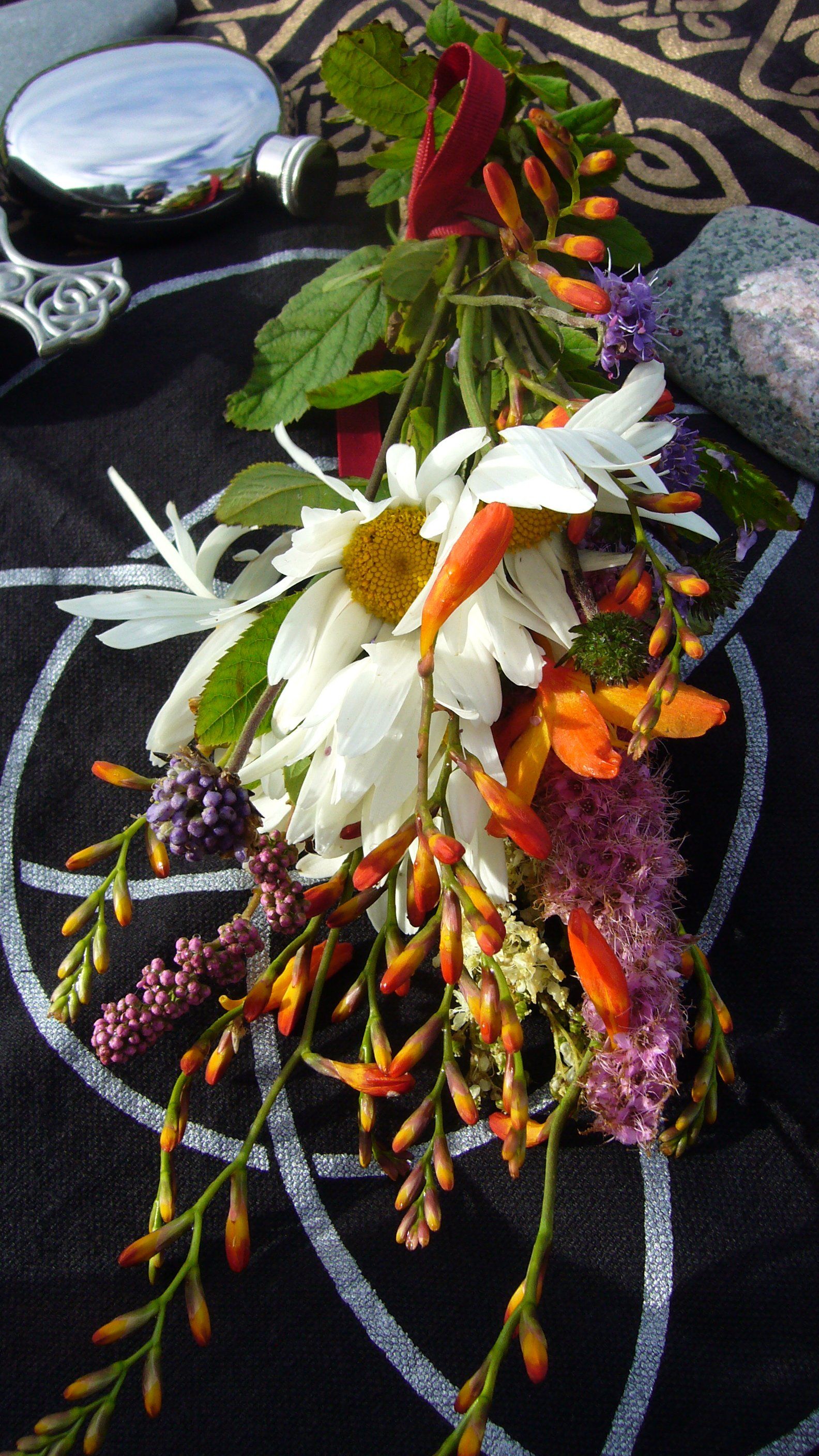

Get married wherever you want
Scottish Law
Under the Marriage (Scotland) Act 1977, couples can get married ANYWHERE in Scotland as long as they have the landowner's permission (see below) and provided a religious celebrant (such as a Scottish Pagan Federation approved celebrant, like us), or a Registrar, performs the ritual.
The choice is yours
This means that legal weddings can, in effect, take place anywhere you want: a stone circle, a beach by moonlight, a dappled woodland … you are NOT restricted solely to religious or civil buildings. A commonly shared theme for many couples is a reverence for nature, so a wedding at an outdoor site with particularly stunning views, in a liminal or threshold place, or with archaeological or historical interest, can really enhance the sacredness of the occasion.
Popular wedding sites in Orkney
Orkney is the perfect place to get married! A group of islands just off the north-east coast of Scotland, Orkney is full of ancient sites which resonate with the power of the ancestors, enigmatic historic ruins, and some of the most stunning natural environments in the world.
A popular choice is The Ring of Brodgar – the third largest stone circle in Britain, about 5000 years old and situated between the lochs of Harray and Stenness, and studded with purple heather – a very peaceful site, with just the call of water-birds and the lapping of the lochs as background sound.
There are woodlands, beaches of clean sand which are often deserted, wild moorlands, windswept hills, and cliffs that are usually full of nesting sea-birds. All of these venues are suitable if you would prefer a natural environment. If you choose a seashore setting, you will probably have an audience of seals all curious to see what is happening!
There are also plenty of superb indoor venues which we would be delighted to advise on. In the event of stubbornly poor weather it is possible to decide on the day, or even at the last minute, to move to an indoors venue – so please don't worry about getting drenched!
Never been to Orkney?
If you don't know Orkney too well, then simply describe to us the type of site you dream of getting married at, and we’ll advise you on what’s available … why not start by browsing the photographs on this site for inspiration?
Is anywhere not available?
Please don't ask us to conduct a ritual anywhere that is unsafe or where access to the public is generally denied. We are happy to advise on this.
We are not able to obtain permission to perform ceremonies at sites which are owned or managed by other religious faiths. Likewise, out of respect to other religious faiths, we will not ask to perform rituals in any site owned or managed by them; although we are honoured if ever invited by them to do so. Please note that this specifically means we are NOT able to conduct ceremonies in the Italian Chapel and / or St Magnus Cathedral.
Under the Marriage (Scotland) Act 1977, couples can get married ANYWHERE in Scotland as long as they have the landowner's permission (see below) and provided a religious celebrant (such as a Scottish Pagan Federation approved celebrant, like us), or a Registrar, performs the ritual.
The choice is yours
This means that legal weddings can, in effect, take place anywhere you want: a stone circle, a beach by moonlight, a dappled woodland … you are NOT restricted solely to religious or civil buildings. A commonly shared theme for many couples is a reverence for nature, so a wedding at an outdoor site with particularly stunning views, in a liminal or threshold place, or with archaeological or historical interest, can really enhance the sacredness of the occasion.
Popular wedding sites in Orkney
Orkney is the perfect place to get married! A group of islands just off the north-east coast of Scotland, Orkney is full of ancient sites which resonate with the power of the ancestors, enigmatic historic ruins, and some of the most stunning natural environments in the world.
A popular choice is The Ring of Brodgar – the third largest stone circle in Britain, about 5000 years old and situated between the lochs of Harray and Stenness, and studded with purple heather – a very peaceful site, with just the call of water-birds and the lapping of the lochs as background sound.
There are woodlands, beaches of clean sand which are often deserted, wild moorlands, windswept hills, and cliffs that are usually full of nesting sea-birds. All of these venues are suitable if you would prefer a natural environment. If you choose a seashore setting, you will probably have an audience of seals all curious to see what is happening!
There are also plenty of superb indoor venues which we would be delighted to advise on. In the event of stubbornly poor weather it is possible to decide on the day, or even at the last minute, to move to an indoors venue – so please don't worry about getting drenched!
Never been to Orkney?
If you don't know Orkney too well, then simply describe to us the type of site you dream of getting married at, and we’ll advise you on what’s available … why not start by browsing the photographs on this site for inspiration?
Is anywhere not available?
Please don't ask us to conduct a ritual anywhere that is unsafe or where access to the public is generally denied. We are happy to advise on this.
We are not able to obtain permission to perform ceremonies at sites which are owned or managed by other religious faiths. Likewise, out of respect to other religious faiths, we will not ask to perform rituals in any site owned or managed by them; although we are honoured if ever invited by them to do so. Please note that this specifically means we are NOT able to conduct ceremonies in the Italian Chapel and / or St Magnus Cathedral.
Get married whenever you want
Your choice of date and time
We offer complete flexibility as to the timing of your ritual: couples can get married WHEN they want – from before dawn to after sunset, any day of the week! We do, however, ask our couples to agree and commit to a date and time in advance, if possible at the time of booking please, even if this is just a provisional time and date.
What about the weather?
We appreciate that many people seeking a ceremony of the type which we offer will probably want an outside venue and, as your marriage licence is valid for the entire day, we may be able to adapt so that your ceremony can take place during a suitable 'weather window', even if it requires a little waiting around on our part. The weather is constantly changing in Orkney – it just sometimes needs a little patience, but to ensure the best possible weather, we perform a Skull Splitter libation.
Please note that popular dates do tend to get booked up well in advance (Beltane, at the beginning of May, and the Summer Solstice are always very popular, as are Saturdays in summer). But we will always try to accommodate last minute requests for rituals, so please do ask.
We offer complete flexibility as to the timing of your ritual: couples can get married WHEN they want – from before dawn to after sunset, any day of the week! We do, however, ask our couples to agree and commit to a date and time in advance, if possible at the time of booking please, even if this is just a provisional time and date.
What about the weather?
We appreciate that many people seeking a ceremony of the type which we offer will probably want an outside venue and, as your marriage licence is valid for the entire day, we may be able to adapt so that your ceremony can take place during a suitable 'weather window', even if it requires a little waiting around on our part. The weather is constantly changing in Orkney – it just sometimes needs a little patience, but to ensure the best possible weather, we perform a Skull Splitter libation.
An
indoor, back-up, location is advised as 'insurance', especially during
the darker half of the year (October through to March inclusive).
Our whole day dedicated to your ceremony
Normally we reserve our entire day exclusively for you
and your wedding. This means that you can change the time of the
ceremony at short notice, if you need or want to.
Please
note that if you ask us to arrange witnesses for you, we will need to
keep to the time booked for your ceremony as it can be difficult to find
witnesses who are willing to be available for an entire day. In
addition, experience has taught us that changing the times of a ceremony
at short notice becomes more of a practical challenge with larger
numbers of invited guests.
Popular dates
Please note that popular dates do tend to get booked up well in advance (Beltane, at the beginning of May, and the Summer Solstice are always very popular, as are Saturdays in summer). But we will always try to accommodate last minute requests for rituals, so please do ask.
Get married however you want
Scottish Law
In Scotland, you can get married HOW you want and still have a fully legal Pagan wedding! Scottish marriage law permits weddings rituals performed by an approved Scottish Pagan Federation celebrant (like us!) to be treated as fully legal under the Marriage (Scotland) Act 1977 and to be recognised as fully legal throughout Britain and the rest of the world.
How marriage law in Scotland differs to England and Wales
National Records of Scotland (previously the General Register Office for Scotland) states that 'As Paganism is a very individualistic religion, no restrictions will be placed on the manner of ceremony which may be used by Celebrants for legal Religious Marriage, as long as these comply with Scottish law'. In other words, Pagan weddings do not have to have any set format, however you do still have to go through a few legal formalities by including these declarations:
Apart from the formalities of these two sentences, your ritual really can take the form of your choice: from the very simple, to the highly ceremonial. YOU can provide as much input as YOU want ... here are some ideas ...
Handfastings
Traditionally, Pagan weddings were, and still are, often called 'handfastings', and both Celtic and northern strands of Paganism claim roots for these types of marriage ceremony. The word 'handfasting' possibly derives from 'hand-festa' which means 'to strike a bargain by joining hands', and therefore may not have originally applied exclusively to marriage 'agreements'. In the past, couples had a choice about how long their handfasting would last: 'a year and a day', 'as long as love shall last', 'this lifetime', or 'all lives to come'. The first of these options led to handfastings being known as 'trial marriages'.
A handfasting ritual often included the practice of the couple grasping each other's hands, sometimes through a stone with a natural hole (such as at the Odin Stone near the Standing Stones of Stenness - sadly no longer standing), and then having their held hands lightly bound. Some traditions state that this should be with a red cord but nowadays the couple can choose the colour(s) of the cords or ribbons they use, perhaps to represent themselves or the 'blessings' they wish to bring to the marriage. We make handmade handfasting cords to order on request.
Sacred space
Often 'handfastings' take place within a cast circle, where sacred space 'between worlds' is created for the duration of the ritual. For this purpose we can provide ritual swords, staffs, shamanic drums and rattles, wands and athames, to your preference - and we have established good relationships with our local constabulary to avoid any embarrassing legal repercussions from waving sharp objects around!
Jumping the broomstick
Mead toast *
Unless requested otherwise, we provide couples with a mead toast - a symbolic drink to honour the couple - from a quaich for them to take their first drink together as husband and wife. This is a traditional Scottish practice from the highlands. Alternatively, you can drink from a horn, chalice, goblet or bowl - all of which we can lend you on request.
In Scotland, you can get married HOW you want and still have a fully legal Pagan wedding! Scottish marriage law permits weddings rituals performed by an approved Scottish Pagan Federation celebrant (like us!) to be treated as fully legal under the Marriage (Scotland) Act 1977 and to be recognised as fully legal throughout Britain and the rest of the world.
How marriage law in Scotland differs to England and Wales
Possibly
the most important point is that couples do NOT need to also have a
civil ceremony at a registry office in order to fully legalise the
marriage. In Scotland the religious ceremony IS the legal ceremony
(exactly as if, for example, you were getting married in a church).
Scottish law requires two (2) witnesses to attend a legal wedding; they must both be over 16 years of age and must understand what they are witnessing. They also need to be prepared to sign the marriage schedule and give their address(es).
Just two simple sentences that must be included:
National Records of Scotland (previously the General Register Office for Scotland) states that 'As Paganism is a very individualistic religion, no restrictions will be placed on the manner of ceremony which may be used by Celebrants for legal Religious Marriage, as long as these comply with Scottish law'. In other words, Pagan weddings do not have to have any set format, however you do still have to go through a few legal formalities by including these declarations:
- A separate declaration by each person being married, in the presence of the person they are marrying and in the presence of two witnesses and a celebrant, that they take the other as husband / wife OR in marriage OR both.
- After these declarations, a declaration by the celebrant (who must be registered with National Records Scotland) that both parties to the marriage are now husband and wife OR are married.
Apart from the formalities of these two sentences, your ritual really can take the form of your choice: from the very simple, to the highly ceremonial. YOU can provide as much input as YOU want ... here are some ideas ...
Handfastings
Traditionally, Pagan weddings were, and still are, often called 'handfastings', and both Celtic and northern strands of Paganism claim roots for these types of marriage ceremony. The word 'handfasting' possibly derives from 'hand-festa' which means 'to strike a bargain by joining hands', and therefore may not have originally applied exclusively to marriage 'agreements'. In the past, couples had a choice about how long their handfasting would last: 'a year and a day', 'as long as love shall last', 'this lifetime', or 'all lives to come'. The first of these options led to handfastings being known as 'trial marriages'.
A handfasting ritual often included the practice of the couple grasping each other's hands, sometimes through a stone with a natural hole (such as at the Odin Stone near the Standing Stones of Stenness - sadly no longer standing), and then having their held hands lightly bound. Some traditions state that this should be with a red cord but nowadays the couple can choose the colour(s) of the cords or ribbons they use, perhaps to represent themselves or the 'blessings' they wish to bring to the marriage. We make handmade handfasting cords to order on request.
Sacred space
Often 'handfastings' take place within a cast circle, where sacred space 'between worlds' is created for the duration of the ritual. For this purpose we can provide ritual swords, staffs, shamanic drums and rattles, wands and athames, to your preference - and we have established good relationships with our local constabulary to avoid any embarrassing legal repercussions from waving sharp objects around!
Jumping the broomstick
Another traditional that is often included is the practice of jumping the broomstick together. The broomstick may represent the couple's home and, more specifically, their hearth fire at the heart of their home. This may symbolise the 'leap of faith' which the couple are taking as they start their new life together. This custom may have African-American and Romani origins, although the Welsh had 'priodas wes ysgub' - 'broomstick weddings'. We can loan a traditional besom for this purpose, if you require one, which we decorate with seasonal flowers and herbs from our own garden. We also supply mini-besoms as keepsakes on request.
Mead toast *
Unless requested otherwise, we provide couples with a mead toast - a symbolic drink to honour the couple - from a quaich for them to take their first drink together as husband and wife. This is a traditional Scottish practice from the highlands. Alternatively, you can drink from a horn, chalice, goblet or bowl - all of which we can lend you on request.
* Over 18s only, sorry.
Altars and elementals
We provide a candle (in a hurricane lamp), appropriate incense, and a small altar posy for the altar (the incense and posy are usually homemade using seasonal flowers and herbs from our garden), unless requested otherwise, and we bring a homemade honey cake as a gift for the spirits of the place. A choice of altar cloths are available.
Clothing and costume
You and your guests can wear whatever you want during your ritual, whether that is traditional formal wedding attire, ceremonial robes, or themed costumes. Likewise, as your celebrants, we can wear formal 'business suits', ceremonial robes, or tartan, according to your preferences.
Alternatives
Although modern Pagans might still refer to their wedding as a handfasting, these days Pagan weddings have no set format; rituals can be conducted within the carefully cast circle of the magical worker, or without grandeur around a shamanic hearth, or simply in a beautiful place which reflects the love couples have for one another.
In addition to a handfasting, couples can exchange traditional wedding rings or other jewellery such as necklaces, bracelets or watches. As such, a modern Pagan wedding can provide the ideal choice for couples who want a wedding that is designed to their own specific tastes and spiritual beliefs.
All types of Paganism
Your ritual can be from any path of modern Paganism and can include themes of your choice. It is equally acceptable for couples to amalgamate themes from a number of paths, your own individual paths, or even none. It is up to the couple to decide how much reference they wish to make to deity, if any.
Altars and elementals
We provide a candle (in a hurricane lamp), appropriate incense, and a small altar posy for the altar (the incense and posy are usually homemade using seasonal flowers and herbs from our garden), unless requested otherwise, and we bring a homemade honey cake as a gift for the spirits of the place. A choice of altar cloths are available.
Clothing and costume
You and your guests can wear whatever you want during your ritual, whether that is traditional formal wedding attire, ceremonial robes, or themed costumes. Likewise, as your celebrants, we can wear formal 'business suits', ceremonial robes, or tartan, according to your preferences.
Alternatives
Although modern Pagans might still refer to their wedding as a handfasting, these days Pagan weddings have no set format; rituals can be conducted within the carefully cast circle of the magical worker, or without grandeur around a shamanic hearth, or simply in a beautiful place which reflects the love couples have for one another.
In addition to a handfasting, couples can exchange traditional wedding rings or other jewellery such as necklaces, bracelets or watches. As such, a modern Pagan wedding can provide the ideal choice for couples who want a wedding that is designed to their own specific tastes and spiritual beliefs.
All types of Paganism
Your ritual can be from any path of modern Paganism and can include themes of your choice. It is equally acceptable for couples to amalgamate themes from a number of paths, your own individual paths, or even none. It is up to the couple to decide how much reference they wish to make to deity, if any.

